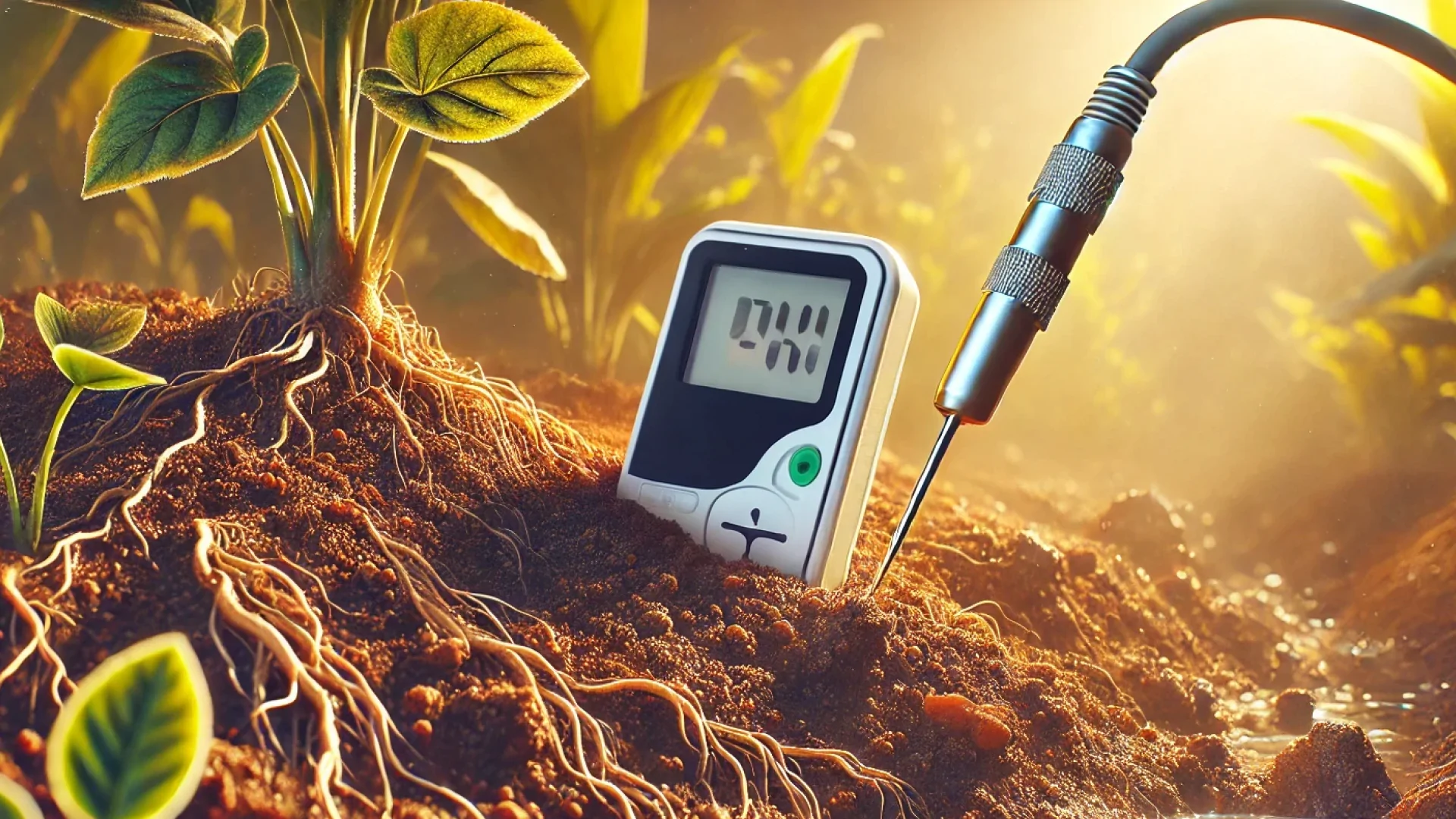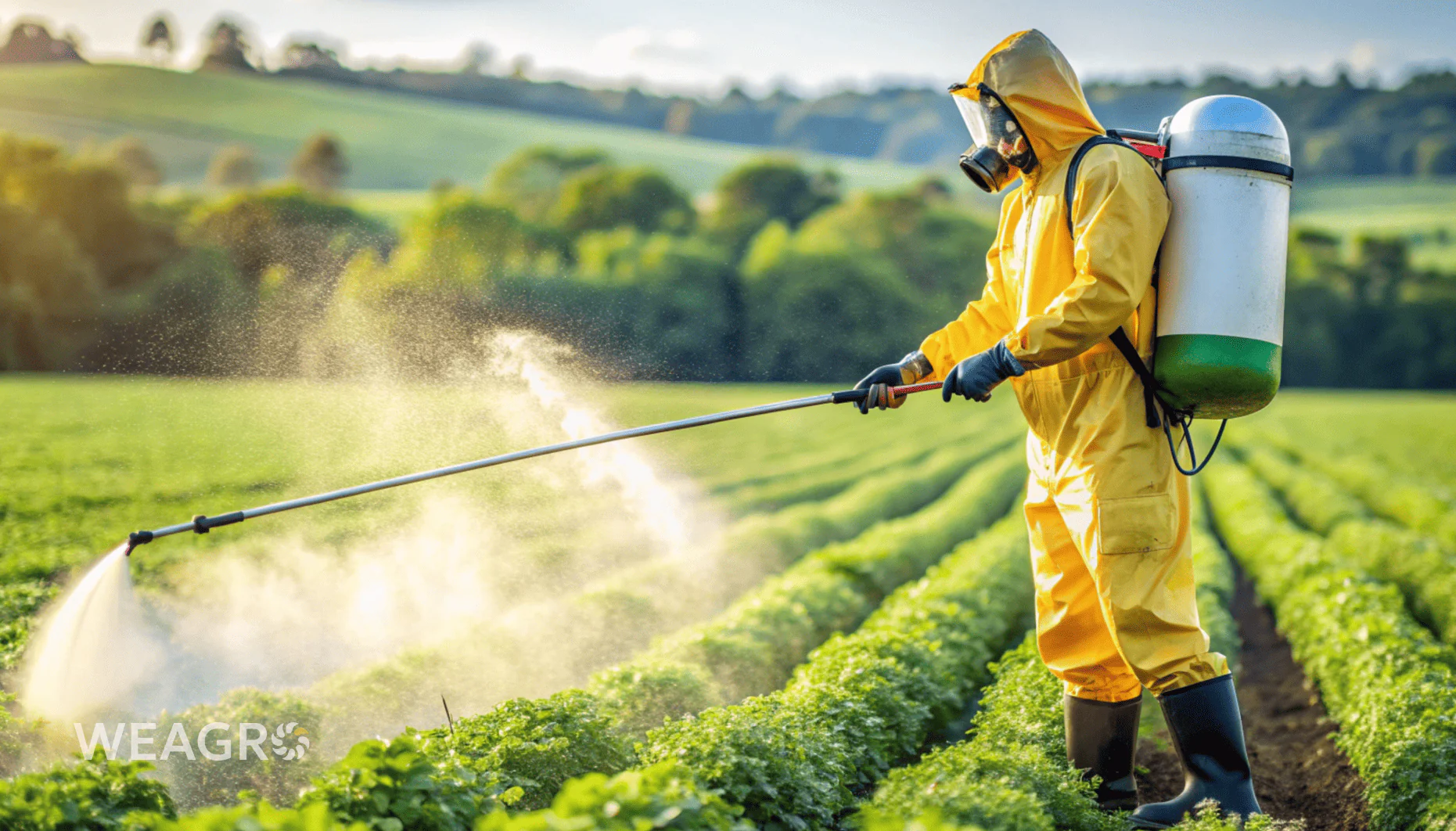Agricultural sector representatives find it useful to know how to determine soil acidity and regulate this indicator. This is an important tool for ensuring high yields and optimal growing conditions for various agricultural crops. It affects nutrient availability, plant health, and their resistance to diseases. Effective field fertility management ensures sustainable development of agricultural business. A detailed overview of all the intricacies and nuances will be useful not only for farmers, but also for gardeners, agronomists, and everyone involved in plant cultivation who seeks to improve crop quality.
What is Soil Acidity
The key indicator that characterizes the concentration of hydrogen ions in the soil solution is soil acidity. The pH scale ranges from 0 to 14, where 7 is considered neutral. Values below 7 indicate an acidic environment, while values above 7 indicate an alkaline environment. They are formed under the influence of various factors:
- natural processes;
- climate;
- biological processes (decomposition of organic matter);
- human activity (fertilizer application, liming).
When selecting the list of agricultural crops for future planting, soil acidity is the key indicator that determines both future harvests and the amount of effort required to obtain them. In acidic soils, the availability of nitrogen, phosphorus, and potassium is reduced, while in alkaline soils, iron and manganese availability is limited. During the preparatory work stage, it is important to conduct all necessary tests and laboratory studies to determine soil pH as accurately and reliably as possible. This will become the starting point for further agricultural activities and land cultivation.
Read also: Cultivator: what it is and how to choose correctly
Why You Need to Know Soil Acidity
It is unacceptable to neglect this indicator, otherwise a significant portion of the efforts made, as well as financial investments, may prove futile. pH determines what to plant and how to work properly on the designated area. Therefore, proper determination of soil acidity is mandatory. This is relevant for several reasons:
- proper selection of appropriate agricultural crops;
- reduced fertilizer costs due to improved nutrient absorption;
- maintaining favorable conditions for microbiological activity;
- preserving good soil structure and fertility;
- implementing relevant additional measures to correct pH and increase yield.
The importance of soil acidity for plants cannot be underestimated. Maintaining indicators at optimal levels allows for significant reduction in resources spent while increasing the quality and volume of future harvests. Proper management of this indicator is one of the main elements of effective agriculture.
Read also: Precision Farming in Ukraine: Definition and Prospects
Types of Soil Acidity
The average level in Ukraine is 6.5 pH. However, in any case, soil acidity measurements should be conducted on a specific plot to determine its particular characteristics and select appropriate organic fertilizers.
| Soil Type | Acidity pH |
| Strongly acidic | Less than 4.5 |
| Acidic | 4,5-5,5 |
| Slightly acidic | 5,5-6,5 |
| Neutral | 6,5-7,5 |
| Slightly alkaline | 7,5-8,5 |
| Alkaline | More than 8.5 |
Slightly acidic and neutral soils predominate in the forest-steppe zone, especially in its central and southern parts. In the west of the country, they are mostly strongly acidic and acidic, while in the south they are slightly alkaline and alkaline.
It is important to consider soil acidity and its types:
- water or active acidity – measured using water extract, this is an indicator that is relevant only during the vegetative period of cultivated crops;
- exchangeable or potential acidity – determines the probable level, so research is conducted in autumn and pH 6.0 is considered neutral;
- hydrolytic acidity – important for applying the required amount of lime that will allow achieving the necessary indicators.
Accordingly, it is insufficient to conduct research once before planting begins and rely exclusively on the obtained results. Soil pH levels should be monitored constantly, so it is important to select a convenient method for this purpose.
How to Determine Soil Acidity: 5 Methods
It is recommended to check indicators during the vegetation period of plants, when the soil is most active. The optimal time for measurements is spring or autumn, after snow melting or the end of summer heat. It is important to avoid measurements immediately after rain or heavy watering: excess moisture can distort results. Soil acidity measurements are recommended to be conducted immediately on several field plots to obtain a more accurate picture. The procedure should be repeated regularly for timely correction.
Method 1: Measurement with Instruments
This requires a digital or analog pH meter, distilled water, a shovel or garden trowel, and a clean container for collecting samples. The process includes the following stages:
- Select several points for sampling material for research.
- Take samples at a depth of 10-15 cm.
- Place the soil in a clean container.
- Add distilled water in a 1:1 ratio and mix well.
- Insert the soil acidity indicator into the resulting solution and wait a few minutes to obtain readings.
Using a specialized analyzer is quite convenient. This will allow for regular testing, which will pay for all costs of its purchase. The main thing is to keep a separate notebook or notepad for records to document results and track changes.
Method 2: Laboratory Analysis
The list of necessary tools is similar, except there is no need for water, and a clean container for sending material for research will be needed. How to determine soil acidity:
- Determine several points on the plot.
- Make depressions to 15 cm depth.
- Collect a small amount of soil.
- Mix thoroughly.
- Transfer part of the mixture to a container.
This will allow you to learn exact indicators and receive relevant recommendations for pH improvement that will help quickly eliminate excessive or insufficient acidity to create favorable conditions for the growth and development of agricultural crops.
Method 3: Litmus Paper for Soil pH Analysis
Special indicator strips have been developed: you can save on laboratory services, and most importantly – get an answer within a few minutes. For this, it is necessary to collect several samples from different parts of the plot and perform several simple actions:
- Add distilled water in a 1:1 ratio.
- Thoroughly mix the liquid and soil.
- Immerse the litmus paper in the resulting solution for a few seconds.
- Compare the color with the scale provided on the package.
In terms of accuracy, this method is somewhat inferior to laboratory studies and testing with specialized analyzers. However, it allows for quick soil acidity determination with minimal costs: the number of litmus strips in the package is sufficient for several series of tests.
Method 4: Determination by Plants
Even without additional tools, you can understand the approximate pH level, especially if the plot has not yet been planted with useful crops and is covered with vegetation that develops excellently without human intervention. On alkaline soils, you can often find:
- plantain;
- clover;
- poppy;
- wormwood;
- alfalfa;
- spurge.
And on acidic soils, these thrive:
- heather;
- sorrel;
- horsetail;
- various types of moss;
- mint.
- nettle;
- chamomile.
By observing the current “inhabitants” of the plot, you can already understand much about its composition and assess the approximate soil pH. However, it is better to use more reliable methods that provide accurate results.
Method 5: Baking Soda and Vinegar
After collecting materials for research, you need to conduct a simple experiment:
- pour a small amount of vinegar – the appearance of foam indicates that acidity is low, and its quantity will help you see with your own eyes the difference between alkaline and slightly alkaline composition;
- add baking soda – the testing method is identical, a reaction with foam formation indicates that the acidity level is quite high.
A similar test can be conducted using black currant. Prepare an infusion from its leaves – pour a glass of boiling water, then add a small amount of soil. A green tint demonstrates neutral indicators, blue – alkaline, pink and red – a significant level of acidification.
How to Reduce Soil Acidity
To ensure optimal conditions for the growth of many cultivated plants, it is often necessary to reduce the basic acidity level – conduct soil deacidification, which is especially relevant for Polissia and the western part of Ukraine. Various methods are used to reduce soil acidity, a detailed overview of which will be useful for agricultural sector representatives.
Lime Application
Liming is one of the most common and effective tools. First, it is necessary to ensure that it is needed by determining the current pH. If the level is high, then the following actions should be performed:
- choose lime – calcitic lime is more aggressive and can be harmful to plant roots, while dolomite flour will be a universal solution;
- calculate dosage – to reduce soil acidity, 0.5 to 1.2 tons per hectare will be needed, depending on soil composition and density;
- distribute evenly – using agricultural machinery, quality mixing with the top layer can be achieved.
The procedure is completed with abundant watering to activate the chemical reaction.
Organic Materials
One of the most effective and safest solutions consistently remains wood ash and compost. For this, it is necessary to clear the area of debris and weeds and distribute fertilizers on the surface. This option is optimal if you need to slightly reduce soil acidity: at high levels, it may prove insufficiently effective.
Use of Green Manure
These are plants grown specifically to improve the quality of agricultural land. They improve structure, increase fertility, and contribute to nitrogen enrichment. Usually, green manure is mowed and incorporated into the soil, where it decomposes, increasing organic matter content while causing soil deacidification. This method is good for long-term perspective – and it will bear fruit. Excellent choices include:
- alfalfa;
- clover;
- mustard.
It is important to let them grow to 20-30 cm, then cut and leave on the surface for decomposition. Mixing with the top soil layer will accelerate the process.
There are various methods that allow achieving the required soil deacidification indicators. However, for organic farming, it is useful to know how to reduce soil acidity quickly and, most importantly, safely, to increase yield without harming agricultural crops.
How to Increase Soil Acidity
If in the west of the country pH is mostly high, in the south alkaline environment predominates, which, conversely, requires its constant increase and strict indicator control. Before using available means, it is important to conduct soil acidity measurements – this is necessary for proper calculations. Main methods that can be used:
- Ground sulfur. The approximate consumption is 50 grams per square meter – the final amount depends on field area and current indicators. On average, up to 300 kg of sulfur per hectare is needed to increase the level by 1 unit.
- Organic acids. A good option for reducing soil acidity is brown peat, especially if you need to prepare agricultural land for growing blueberries, bilberries, and conifers. Adding organic matter to pre-prepared planting holes should be completed with abundant watering.
- Mineral substances. Fertilizer manufacturers actively produce safe complex products that can simultaneously improve soil quality and slightly increase soil pH to required values.
There are many crops for which an alkaline environment is the best habitat, and it provides all necessary conditions for full growth and development. This list includes barberry, boxwood, hibiscus, and many other options – and you can focus specifically on them. Or slightly adjust soil acidity for plants to expand the list of available green plantings. The main thing is to act gradually, avoiding sharp “jumps” in indicators.
Farmers have to constantly monitor pH levels – this is an integral part of field cultivation. To make agribusiness work even more comfortable and productive, a convenient online service WEAGRO has been developed. This is a unique opportunity to order a complete set of necessary equipment and materials, deferring payment for up to 180 days – and begin implementing current plans and tasks without postponing them indefinitely.









